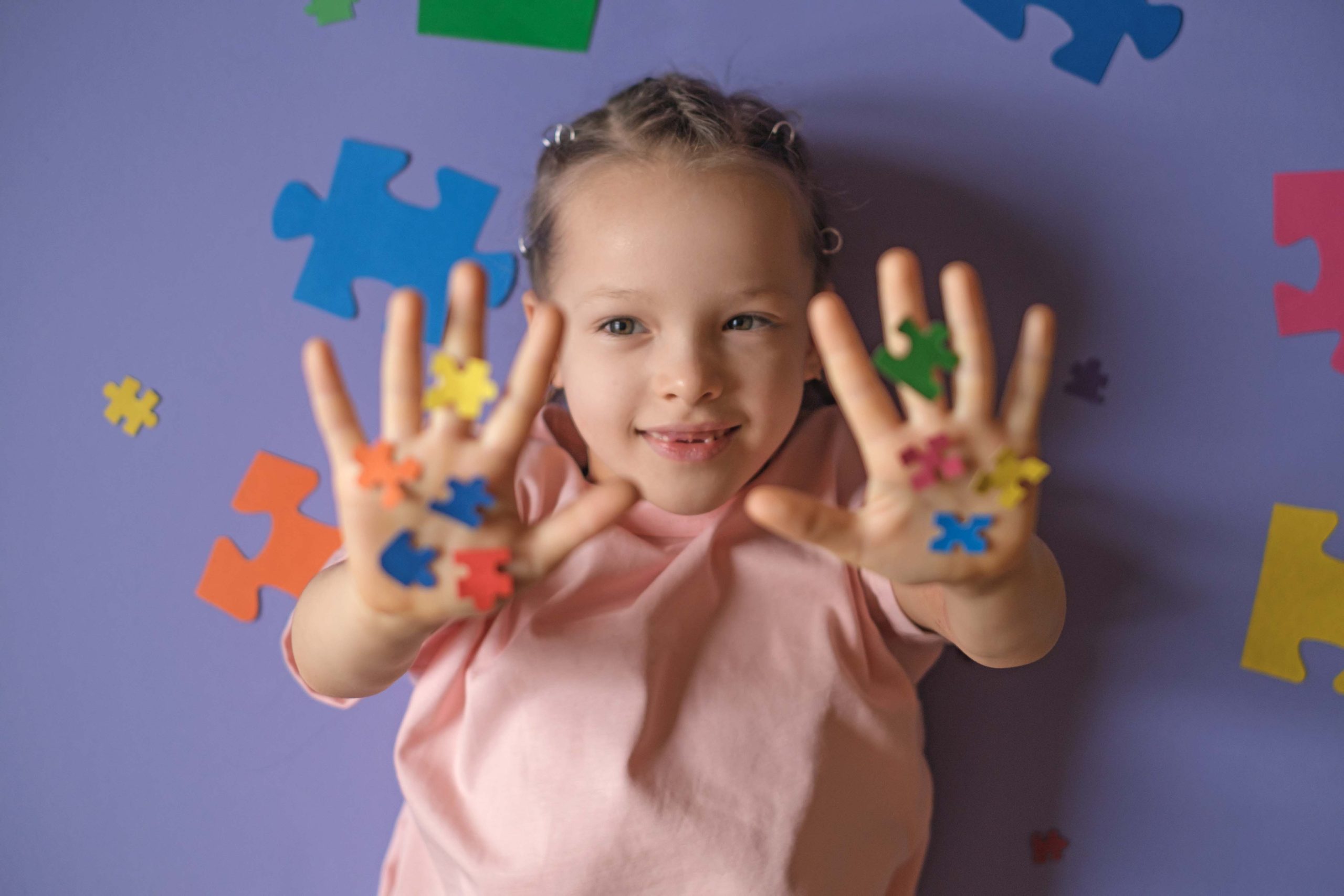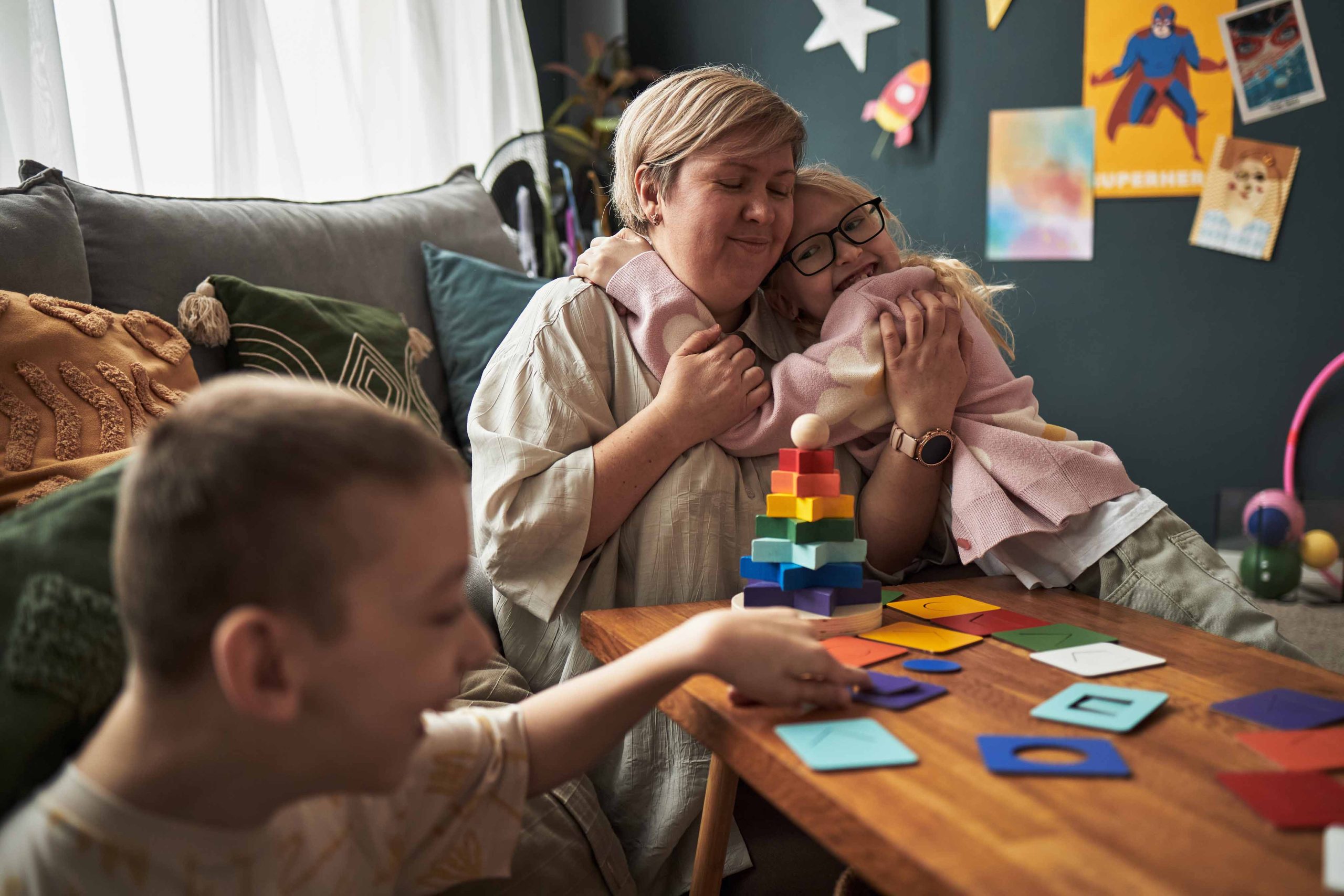In the past decade, autism spectrum disorder (ASD) diagnoses have tripled worldwide. About 1 in every 127 people is now recognized as being on the spectrum. We’re also learning more about how autism shows up differently in girls, leading to a faster rise in diagnoses among females. Although the average age for diagnosis is around 5 years old, more adolescents and adults are now receiving a diagnosis later in life.
When your child receives an autism diagnosis, it can stir up a mix of emotions: relief at finally having some answers, fear of what lies ahead, and confusion about what this label truly means. As a parent, you might wonder: Does this diagnosis really capture who my child is? Will it help us understand their unique strengths and provide the support they need?
What is autism?
Autism is a neurodevelopmental condition. This means it involves differences in how the brain develops and processes information over time. These differences can affect how a person communicates, interacts socially, and understands the world around them. For some children, this might mean challenges with expressive language. For others, it might show up as sensory sensitivities or a strong need for routines, making unexpected changes difficult.
As my colleague Ana Pilar Collado recently explained, calling it a spectrum better reflects what we now understand: autism appears in many diverse ways. The word spectrum is key because no two autistic people are exactly alike. This broader understanding has allowed many people—especially girls and adults—who were previously undiagnosed to finally receive recognition and support.
You may ask yourself: How can one diagnosis cover such a wide range of needs?

What level of support does my child need?
To accurately reflect autism’s many different presentations, the DSM-5 diagnostic manual includes three levels based on the amount of daily support a person requires:
- Level 1 – Requires support: These individuals are often autonomous and verbal but face challenges with social communication or flexible thinking. They usually need support managing social relationships, changes, or highly stimulating environments.
- Level 2 – Requires substantial support: These children have more noticeable difficulties in communication and behavior, requiring more structured daily support.
- Level 3 – Requires very substantial support: These individuals need constant help with communication, daily activities, and safety. Often, autism is accompanied by intellectual disability or significant developmental delays.
What about IQ, intellectual disability, and Asperger’s syndrome?
One common question families ask is: Does an autism diagnosis mean my child has an Intellectual Disability? The answer is: not necessarily. Autism and intellectual ability are related but not the same. Some autistic people do have Intellectual Disabilities (significant challenges with learning and reasoning), but many do not.
Approximately:
- 40% of autistic individuals have an IQ below average (less than 85),
- 40% have an above-average IQ (more than 115),
- and 20% fall within the average range.
These figures show how diverse autism is—not only in behavior and personality but also in cognitive ability.
You may have also heard of Asperger’s syndrome, especially if you’ve talked with adults diagnosed during childhood or adolescence. Asperger’s was recognized in 1994 but was removed from the DSM-5 in 2013. It was used to describe people on the spectrum with strong language and cognitive skills but difficulties in social, sensory, or behavioral areas. Over time, Asperger’s became popularly associated with “high IQ” or being “gifted,” leading to a common misconception: if someone is intellectually capable, they don’t need support.
In reality, intellectual ability alone doesn’t determine what kind or amount of help a person needs. Someone can excel academically but still struggle with everyday tasks, social relationships, anxiety, or overwhelming environments. That’s why the DSM-5 replaced subtypes like Asperger’s with a spectrum diagnosis and support levels—better reflecting real life and ensuring everyone can access the help they need.
Because traits, intellectual ability, and support needs overlap in complex ways, your child’s diagnosis likely included both autism-specific assessments and a cognitive evaluation. Structured interviews and questionnaires help professionals understand your child’s strengths and challenges across different settings. This holistic view goes beyond labels and helps create personalized support plans tailored to who your child really is—not just test scores.

What’s the point of the diagnosis? What are its benefits?
If diagnosis is about understanding your child’s unique needs and strengths, you might ask: Why use a general label like Autism Spectrum Disorder? This is an important question. Diagnosis is not meant to box anyone in but to open doors—to services, support, and understanding within your community. Receiving a formal autism diagnosis is helpful for several reasons:
- Access to resources and supports: Many therapies, accommodations, or academic aids require an official diagnosis. Without it, families often hit roadblocks trying to get help.
- Guidance for interventions: The diagnosis helps professionals and caregivers use specific knowledge and tools tailored to autism—such as speech therapy, occupational therapy, social skills training, or school accommodations. Interventions are always customized, but diagnosis guides the general approach.
- Shared language: Naming what’s happening makes it easier for families, teachers, health professionals, and the child to communicate. It explains behaviors that might otherwise be misunderstood or judged.
- Validation and relief: For many, diagnosis brings comfort. It confirms what families have observed and shifts the focus from “something’s wrong” to “my child experiences the world differently, and now we understand why.”
- Belonging and identity: Over time, many autistic people and their families find the diagnosis offers not just support but also a sense of identity. It can connect them to communities with similar experiences, fostering belonging. For children, especially as they grow, understanding autism can be freeing rather than limiting.
What steps come after the diagnosis?
- Give yourself time to process: It’s okay to feel many emotions—relief, sadness, confusion, hope—or all at once. Allow yourself space to absorb what this diagnosis means for your child and family. Remember: the diagnosis doesn’t change who your child is; it changes how you understand their experience.
- Ask questions: Don’t hesitate to reach out again to the professional who made the diagnosis. You might ask:
- What does this diagnosis mean for my child specifically?
- What are their strengths and current challenges?
- What supports or interventions do you recommend now?
- Explore support and services available: Usually, after diagnosis there are one or more guidance sessions with the evaluating professional to answer questions, share feelings, and begin planning. Support is not just for your child but for the whole family.
- Coordinate with the school: An official autism diagnosis often opens doors to educational resources and specialized support like special education teachers or speech therapists. You can start by meeting with your child’s teacher and the school counselor, who coordinates support and evaluates needs. They can advise you on available services and help develop an individualized plan that evolves as your child grows. Your psychologist can also share reports or recommendations to better adapt the school environment.
- Learn about autism (but take it slow): It’s tempting to try to understand everything at once, but autism is a broad and evolving topic. Trust professionals and experienced families to guide you to good books, websites, or parent groups. Learning little by little will help you feel more confident and less overwhelmed.
- Connect with other families: Talking to other parents who’ve been through similar experiences can be very comforting and practical. Many find emotional support and useful ideas through these connections.
- Focus on your child, not just the diagnosis: Most importantly, the diagnosis doesn’t define your child. It helps explain some behaviors, preferences, and needs, but remember to keep seeing your child as a whole person—with their interests, humor, creativity, and unique way of being. Support plans should revolve around who they are, not just the label.

About the author
Iciar is a Psychologist at SINEWS MTI and PhD student. She specializes in neuropsychological assessment, diagnosis, and intervention across neurodevelopmental conditions such as autism and ADHD. Her doctoral research focuses on emotion regulation and its impact on social coping and quality of life in neurodiverse youth. Iciar works with clients of all ages and backgrounds, addressing a broad range of mental health concerns including anxiety and behavioral challenges. Her approach is integrative and strength-based, emphasizing personalized care that respects neurodiversity and promotes wellbeing. Drawing from her international training and clinical experience, she combines research and practice to support families in understanding and accompanying their children’s unique developmental journeys.
Sinews MTI
Psychology, Psychiatry and Speech Therapy

